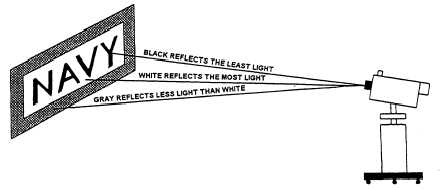CHAPTER 14
TELEVISION
Television is the offspring of three media — the
theater, film and radio. In a relatively short period (about
45 years), television has progressed from a mere
novelty, to arguably, the most powerful information and
entertainment medium.
The technological advancements of television in
this short time frame are quite remarkable. Color
television sets virtually replaced black-and-white
models, cable television eliminated the need for viewers
to tune in broadcast channels with “rabbit ear” antennas,
and videotape, videotape machines and character
generators (CGs) signaled the end of 16mm television
film and cumbersome production equipment and
methods.
The military services recognized the potential of
this new form of communication and started Armed
Forces Television at Limestone Air Force Base, Maine,
in 1953. The success of this experimental station
convinced DoD officials that overseas television
stations were feasible. One year later, the DoD officially
recognized the television mission and combined it with
Armed Forces Radio to form the Armed Forces Radio
and Television Service (AFRTS). In 1976, the CNO
established the Navy Broadcasting Service (NBS) to
manage AFRTS outlets within the DON.
Most likely, your initial television broadcasting
experience will be with an NBS detachment overseas or
aboard a ship equipped with a Shipboard Information,
Training and Entertainment (SITE) system. For these
reasons, you are responsible for knowing the basics of
this fascinating but demanding medium.
HOW TELEVISION WORKS
LEARNING OBJECTIVE: Identify how the
television medium works.
Television is the process of converting reflected
light rays from a subject or scene into electrical impulses
and reproducing these impulses at a distant receiver.
The television camera picks up reflections of light
from the scene, while the microphone picks up sound.
The camera changes the light reflections into electrical
impulses, and at the same time, the microphone changes
the sound into electrical impulses. These impulses are
sent to the transmitter or are recorded on videotape.
To be viewed, the signal from the transmitter is
received by the viewer’s television set, or the recording
is played back — either to the transmitter or directly to
a receiver. At the receiver, the picture and sound signals
are isolated and sent through separate picture and sound
circuits. Electronic components within your television
set change these signals back to video on the cathode-ray
picture tube and audio on the television speaker.
THE TELEVISION CAMERA
LEARNING OBJECTIVE: Recognize the basic
operation, electronic characteristics and main
types of television cameras.
The television camera is the heart of the television
system. It records the varying amounts of light reflected
from objects in the televised scene. This amount of light
varies according to the lighting, color or shade of the
object.
Figure 14-1 shows a banner with the word NAVY
printed in black on a white background. The border
Figure 14-1.—The various amounts of light seen by the television camera.
14-1



